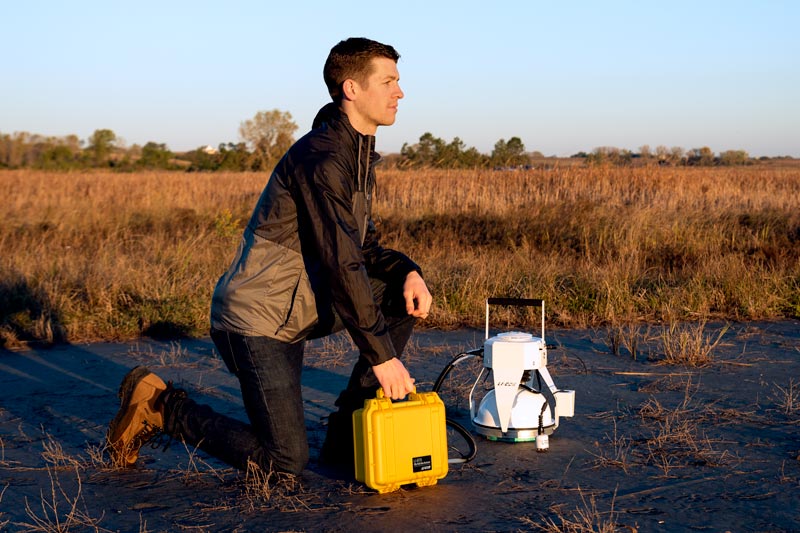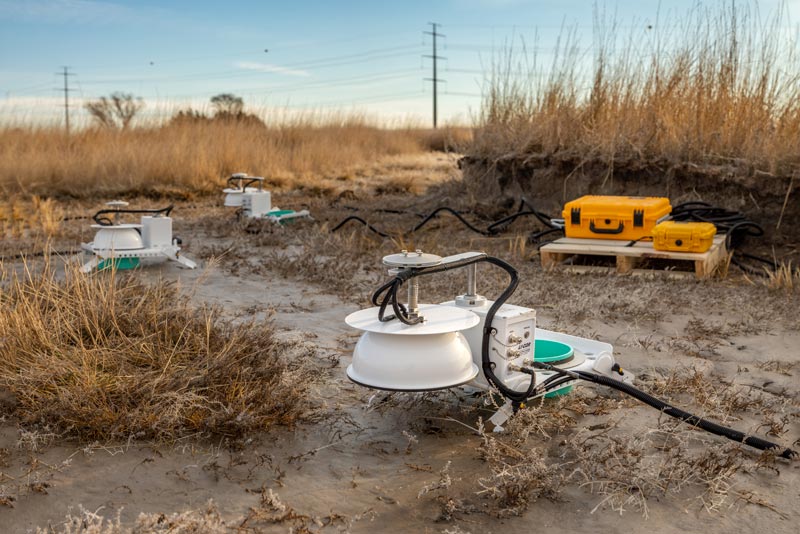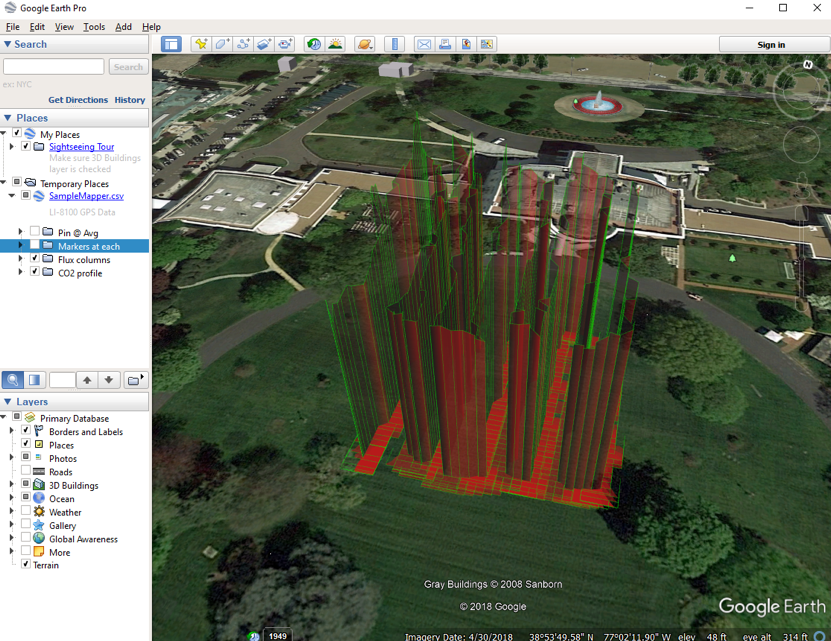Soil Gas Flux Solutions
Grounded in Science, Designed for Research
From idea to understanding, LI-COR has your soil gas flux research covered. No other solution is as flexible or delivers the same level of proven hardware, gas analyzers, and advanced data analysis software.
Get a Quote Design Your Own SystemWebinar
CH4/CO2/N2O Measurements with LI-COR LI-7810, LI-7815, and LI-7820 Trace Gas Analyzers
Extend your research to plants and the atmosphere
What happens with soil has a lot to do with vegetation, or the lack of it. How well are plants taking CO2 from the air and putting it into soil? Does it stay there, and for how long? Learn about leaf-level CO2 dynamics with plant physiology measurements. Automate and scale-up to the ecosystem to measure CO2, H2O, and CH4 with eddy covariance systems. Learn more about LI-COR ecosystem monitoring solutions.
Learn more
What makes LI-COR different?
LI-COR offers hardware, software, and analyzers that are based on extensive scientific research and testing. Patented designs minimize disruption of natural soil gas transport across the soil surface and record high-precision flux measurements to evaluate spatial and temporal variability.
Together, this integrated system provides an entirely comprehensive research solution for measuring large- and small-scale events—including CO2, CH4, or N2O greenhouse gas emissions.
Designed for flexibility and convenience
LI-COR soil gas flux systems combine more than 20 years of experience with the latest innovations for flexibility and convenience.
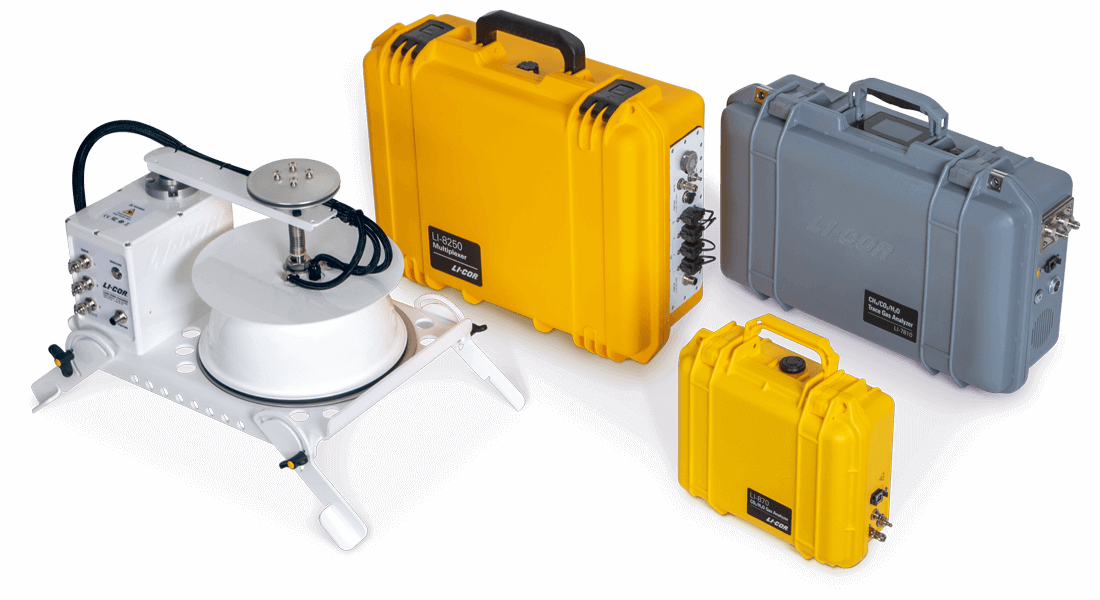
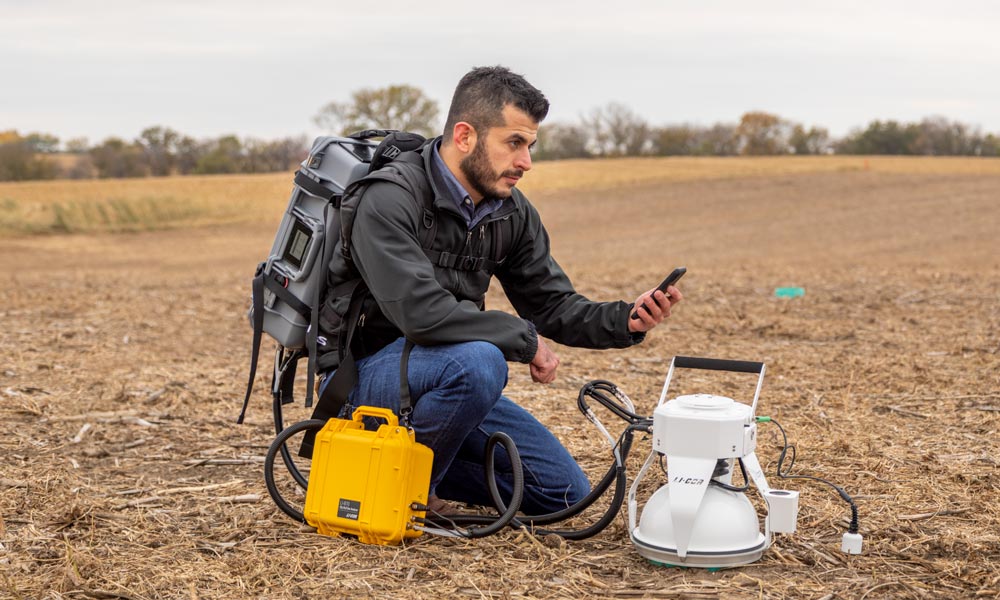
Tailored for dependable practicality
Each LI-COR gas analyzer is portable, durable, and simple to deploy—allowing you to take CO2, CH4, and N2O survey and long-term measurements with ease.
Engineered to reduce artificial impact
The importance of soil gas flux chambers to take accurate measurements is often underestimated. An inherent challenge to chamber design is the influence the chamber may have on measurements.
All LI-COR chambers are designed to minimize chamber interference on the natural soil gas flux, and gas production and consumption, leading to accurate, consistent measurements.
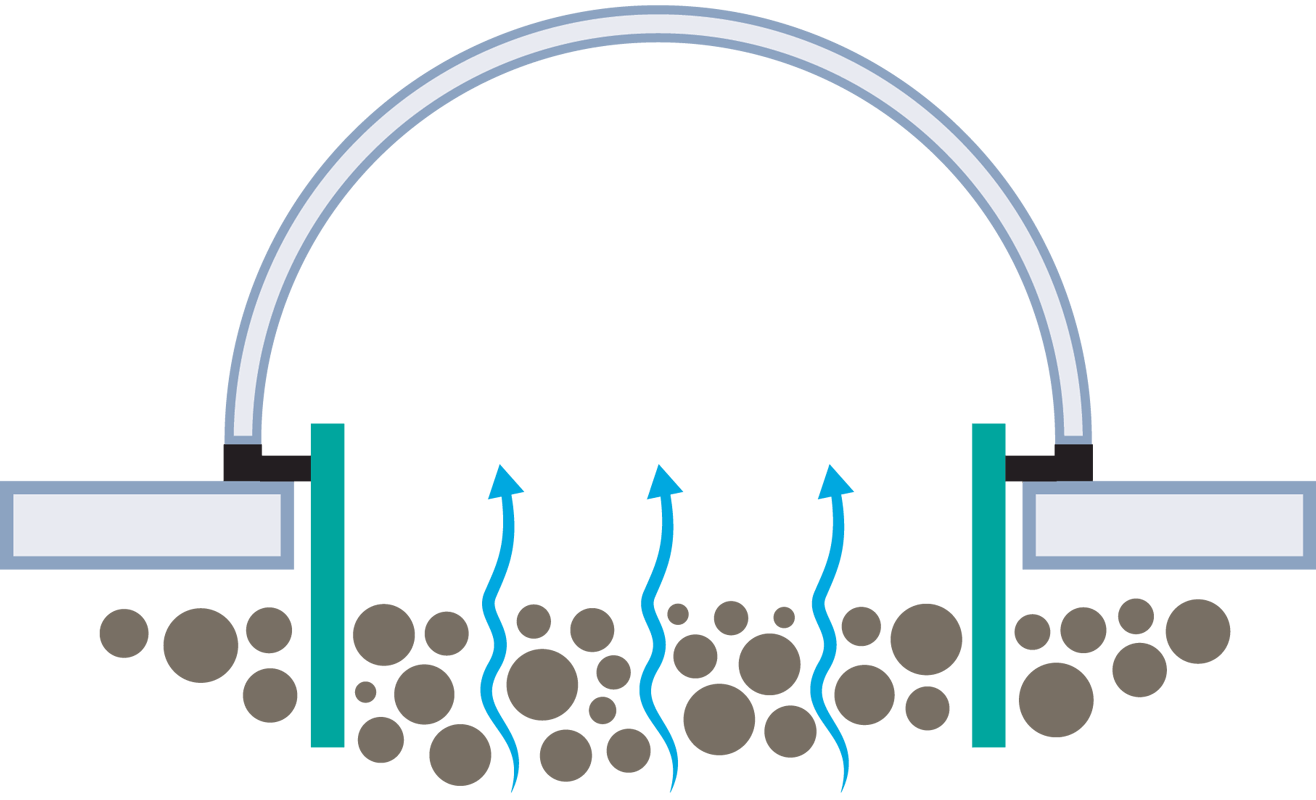
Minimize instrument influence
The perforated base of LI-COR long-term chambers allows for the natural exchange of gas, sunlight, and precipitation between the atmosphere and soil surrounding the chamber, minimizing the effect of the deployment of soil chambers.

Equalize chamber pressure
Any difference between the air pressure inside a soil chamber and ambient air will affect the flux rate. If the chamber is not properly vented, under windy conditions the Venturi effect can cause a mass flow of air from the soil into the chamber, leading to significant overestimation of soil gas flux.
To maintain pressure equilibrium, all LI-COR soil chambers feature a patented pressure vent.
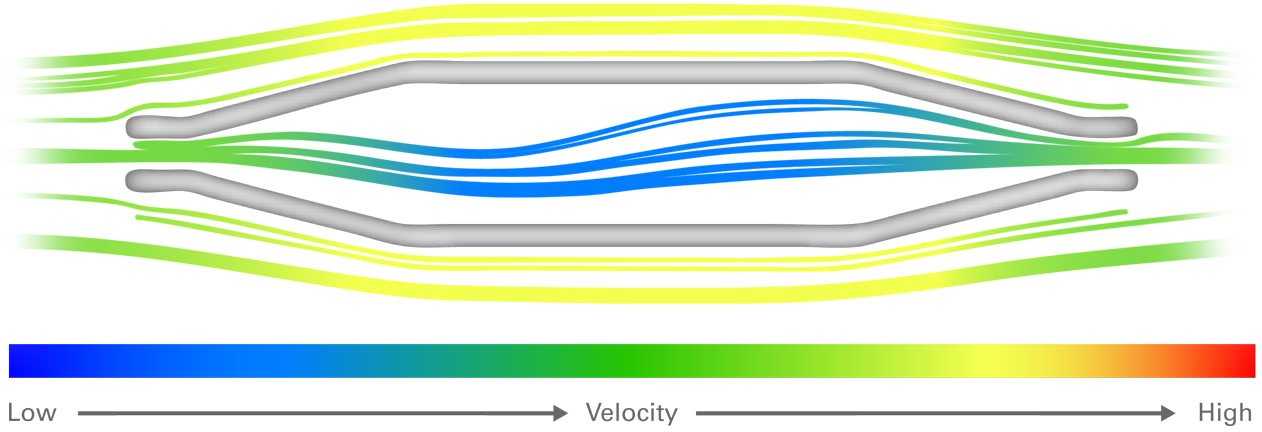
Minimize soil disturbance
Any soil disturbance can artificially influence natural gas fluxes. LI-COR chambers are placed over soil collars that are inserted before measuring. An automated mechanism seals the chamber around the collar. Because the chamber never touches the collar directly, any soil disturbance is negligible and fluxes are minimally affected.
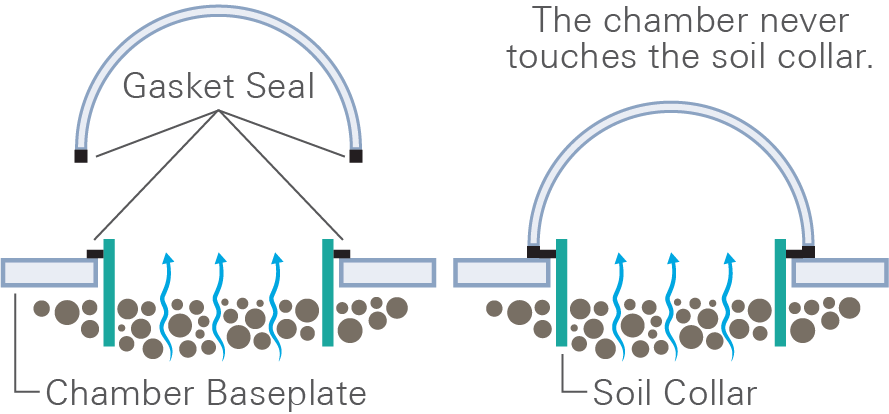
Recognize the altered diffusion gradient
Once the chamber is placed over the collar, increasing gas concentrations reduce the gas diffusion gradient—suppressing the efflux. A linear regression will lead to a significant flux underestimation, particularly in porous soil.
LI-COR uses an exponential function to account for the altered diffusion gradient to estimate flux at the time of chamber closing—when gas concentration is nearest to ambient levels.
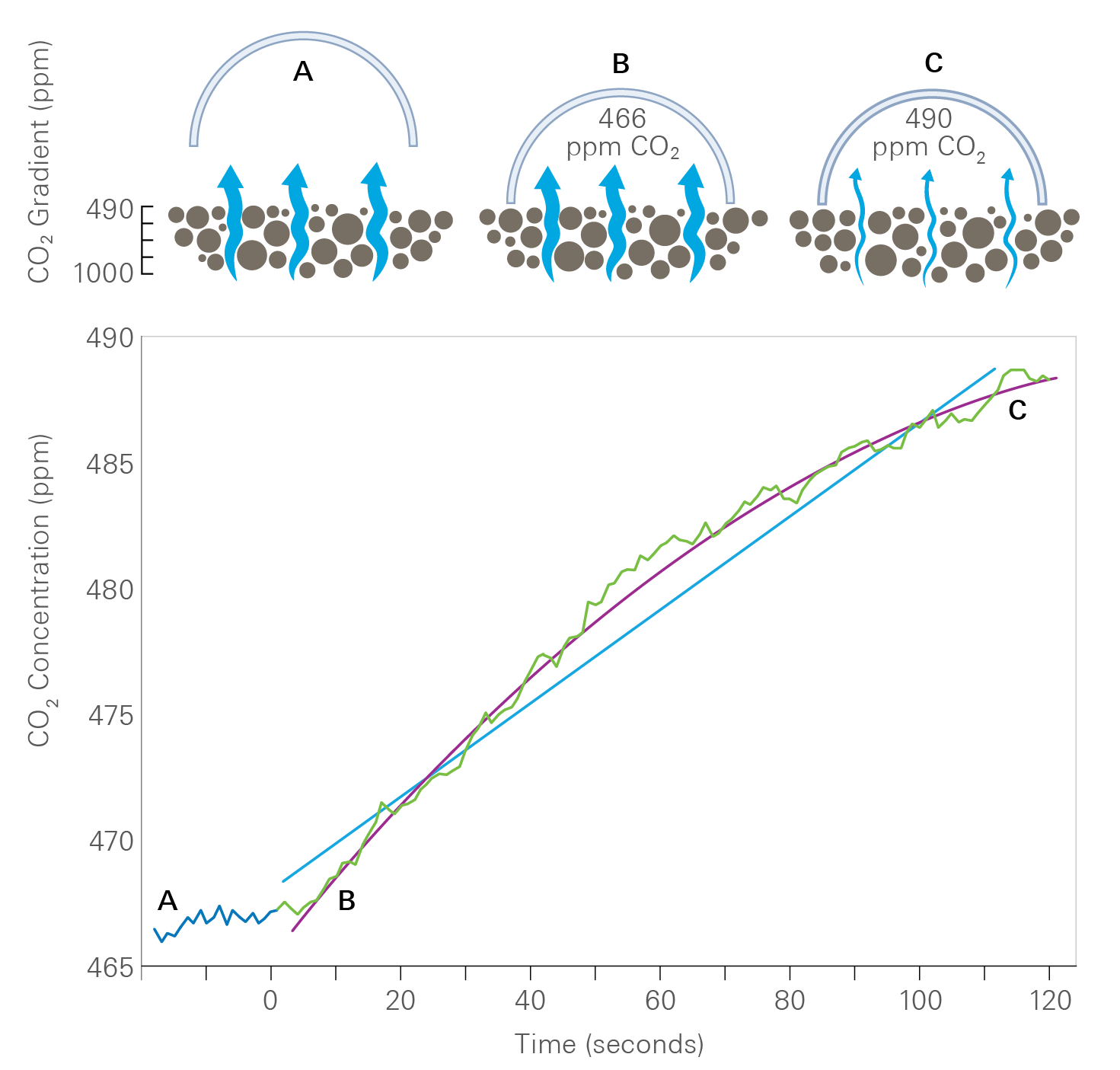
Optimize mixing of chamber air
Air mixing is critical for accurate flux measurement, but fans create pressure gradients within the chamber that may suppress or enhance flux.
All LI-COR soil chambers are designed without fans and mixing is achieved through a bowl-shaped chamber and air inlet/outlet positioning.
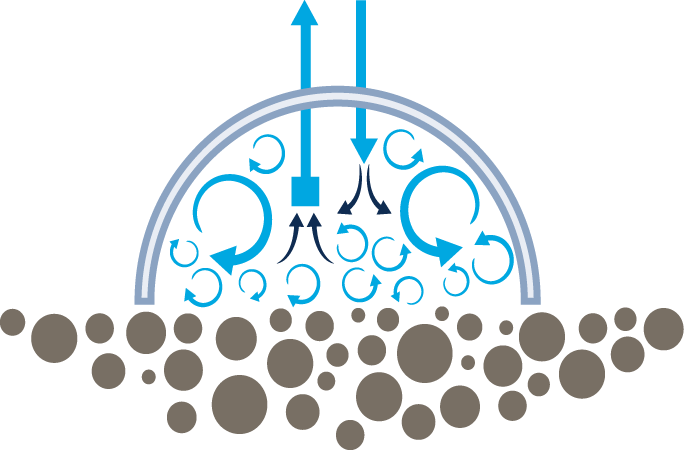
References
- Xu, L., et.al. (2006). On maintaining pressure equilibrium between a soil CO2 flux chamber and ambient air. Journal of Geophysical Research, 111(D8). DOI: 10.1029/2005JD006435
- Furtaw, M.D., McDermitt, D.K., and Xu, L., “Vent and soil flux measurement system,” U.S. Patent 7,856,899, December 28, 2010.
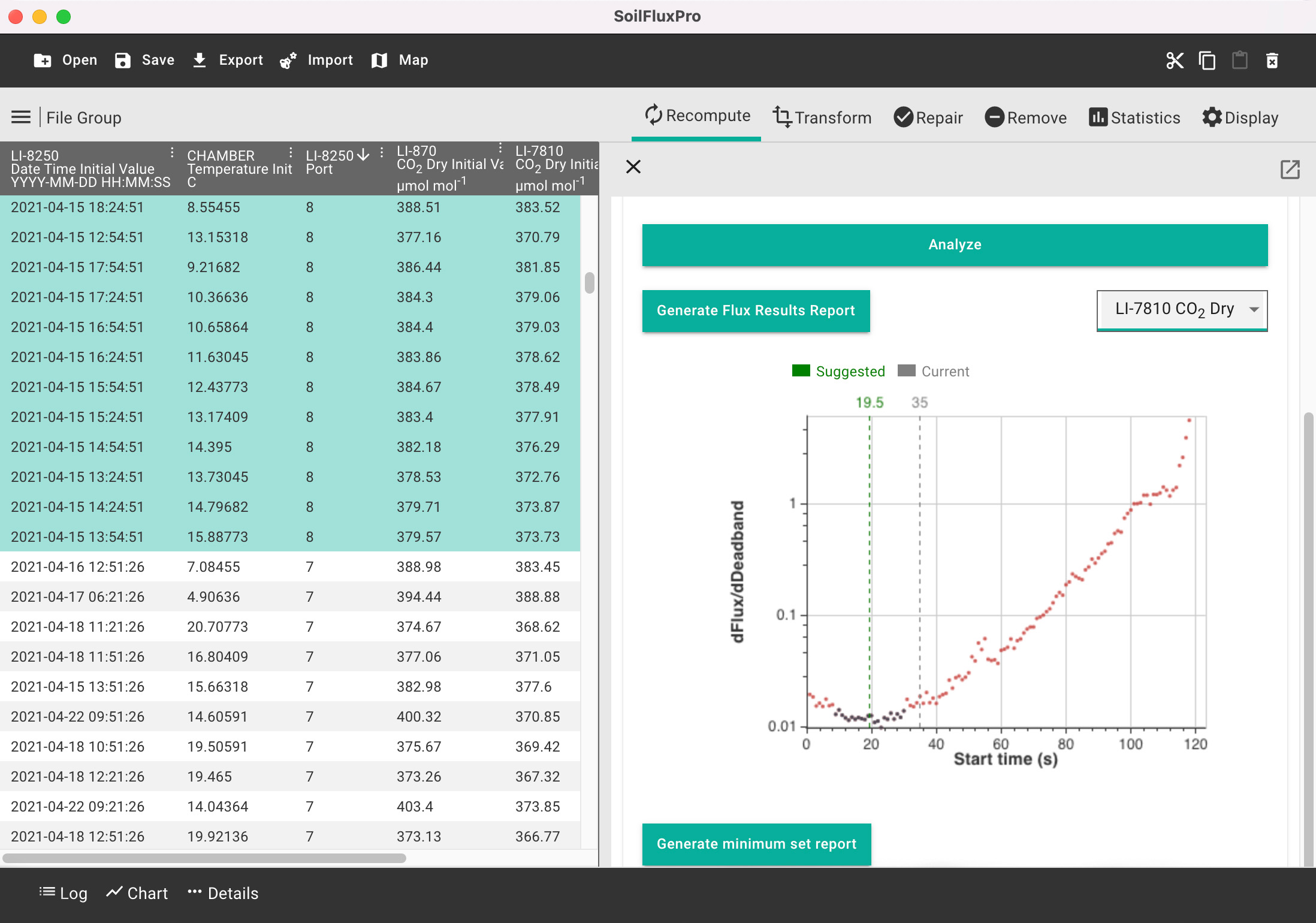
SoilFluxPro™ Software
SoilFluxPro Software simplifies the management and processing of large soil gas flux datasets. SoilFluxPro is powerful, free software included with LI-COR soil gas flux solutions. View, revise, and recompute flux data, get advanced guidance on deadband and stop time, perform quality assurance and quality control, and much more.
Looking for LI-8100A chambers and accessories? Find them all here.
